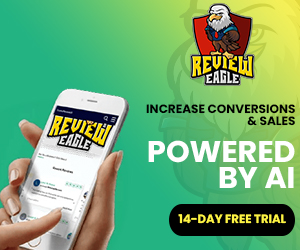Are you struggling to convert website visitors into paying customers? Do you find yourself wondering how to make the most out of your marketing efforts? Well, look no further! In this blog post, we will dive deep into the world of retargeting strategies and how they can help boost your conversions for maximum impact. Imagine this: a user visits your website, browses through your products, maybe adds something to their cart, but then leaves without making a purchase. It's a frustrating scenario, right? But fear not, because retargeting strategies are here to save the day. Retargeting, also known as remarketing, is a powerful marketing technique that allows you to reach out to those users who have already shown interest in your website or products. By serving targeted ads to these potential customers across various platforms, you can remind them of their initial intent and encourage them to come back and complete their purchase. Now, you may be wondering, how exactly can retargeting strategies boost your conversions. Well, my friend, that's what we're here to uncover. From dynamic product ads tailored to each individual's browsing history to personalized email campaigns, we will explore a range of tactics designed to re-engage your audience and drive them toward conversion. So, if you're ready to take your marketing game to the next level and maximize your conversions, buckle up and get ready to dive into the world of retargeting strategies. In this comprehensive guide, we'll equip you with the knowledge and tools you need to transform your website visitors into loyal customers. Let's get started!
Understanding Retargeting: What is retargeting and why is it important?
Retargeting, also known as remarketing, is a powerful digital marketing strategy that allows you to target and engage with potential customers who have previously visited your website or interacted with your brand in some way. It involves displaying tailored ads to these individuals as they browse the internet, keeping your brand top-of-mind and encouraging them to revisit your site and complete a desired action.
So, what exactly is retargeting and why is it important? Retargeting works by placing a piece of code, known as a pixel, on your website. This pixel tracks visitors and collects data about their behavior, such as the pages they visit or the products they view. Armed with this information, you can create highly personalized ad campaigns that specifically address the interests and needs of these potential customers.
Retargeting is important for several reasons. Firstly, it helps you increase brand awareness and visibility. By consistently showing relevant ads to people who have shown interest in your brand, you stay at the forefront of their minds, making it more likely that they will choose your business when they are ready to make a purchase.
Secondly, retargeting allows you to maximize your conversion rates. By targeting individuals who have already displayed an interest in your products or services, you are focusing your efforts on a warm audience who is more likely to convert. This can lead to higher click-through rates, increased sales, and a better return on investment.
Lastly, retargeting enables you to optimize your marketing budget. Rather than wasting resources on broad advertising campaigns that may not reach your target audience, retargeting allows you to allocate your budget toward individuals who have already shown an interest in what you have to offer. This reduces wasted ad spend and ensures that your marketing efforts are focused on those who are most likely to convert.
In conclusion, retargeting is a powerful tool that can significantly boost your conversions and improve your overall marketing performance. By understanding what retargeting is and why it is important, you can implement effective retargeting strategies that drive results and help you achieve your business goals.
The Benefits of Retargeting: How retargeting can boost your conversions and ROI.
Retargeting is a powerful marketing strategy that can greatly benefit your business. By specifically targeting users who have already shown interest in your products or services, retargeting can significantly boost your conversions and return on investment (ROI).
One of the main benefits of retargeting is its ability to keep your brand top of mind for potential customers. When users visit your website and then leave without making a purchase, retargeting allows you to continue reaching out to them through targeted ads. This constant exposure can increase brand recognition and recall, making it more likely for users to eventually convert.
Another advantage of retargeting is its effectiveness in driving repeat purchases. By retargeting users who have previously made a purchase, you can encourage them to come back and buy from you again. This can be done through personalized offers, exclusive discounts, or reminders of related products or services.
In addition to boosting conversions, retargeting can also improve your ROI. Compared to traditional advertising methods, retargeting allows you to reach a more qualified audience, resulting in higher conversion rates and lower acquisition costs. By focusing your marketing efforts on users who have already shown interest, you can make your advertising budget go further.
To achieve maximum impact with your retargeting strategies, it's important to carefully analyze your data and segment your audience. By tailoring your ads to specific user behaviors, interests, or demographics, you can deliver more relevant and personalized messages, increasing the chances of conversion.
In conclusion, retargeting is a valuable tool that can greatly enhance your marketing efforts. By keeping your brand in front of potential customers, encouraging repeat purchases, and improving your ROI, retargeting can help you achieve your business goals and drive success.
Types of Retargeting: Exploring different retargeting strategies and their effectiveness.
Retargeting is a powerful marketing technique that can significantly boost your conversions. By reaching out to users who have already shown interest in your brand or product, you can effectively nurture them towards making a purchase. There are various types of retargeting strategies that you can employ to maximize your impact.
One popular type of retargeting is site retargeting. This involves displaying personalized ads to users who have visited your website but did not convert. By reminding them of your brand and products, you can encourage them to come back and complete their purchase.
Another effective strategy is search retargeting. This involves targeting users who have searched for relevant keywords related to your business. By displaying ads to these users, you can capture their attention while they are actively looking for products or services like yours.
Social media retargeting is also gaining popularity. With the vast number of users on platforms like Facebook and Instagram, you can target individuals who have engaged with your brand or visited your website. By displaying tailored ads on their social media feeds, you can stay top of mind and increase the likelihood of conversion.
Lastly, email retargeting allows you to re-engage with users who have provided their email addresses but haven't made a purchase. By sending personalized emails with enticing offers or reminders, you can encourage them to revisit your website and complete their transaction.
Each of these retargeting strategies has its own effectiveness and benefits. By implementing a combination of these techniques, you can optimize your retargeting efforts and drive maximum impact for your business.
Creating a Retargeting Campaign: Step-by-step guide to setting up a successful retargeting campaign.
Creating a Retargeting Campaign: Step-by-step guide to setting up a successful retargeting campaign.
Retargeting strategies can significantly boost your conversions and maximize the impact of your marketing efforts. Here's a step-by-step guide to setting up a successful retargeting campaign.
1. Define your goals: Start by identifying the specific objectives you want to achieve through your retargeting campaign. Whether it's increasing sales, driving website traffic, or raising brand awareness, having clear goals will help you tailor your strategies accordingly.
2. Install a retargeting pixel: To track and target your website visitors, you need to install a retargeting pixel on your site. This snippet of code will collect data on your visitors and enable you to show them relevant ads across various platforms.
3. Segment your audience: Divide your website visitors into different segments based on their behavior and interests. This allows you to create targeted ads that resonate with each segment, increasing the chances of conversion.
4. Craft compelling ad creatives: Design visually appealing and engaging ads that grab attention and entice your audience to take action. Use persuasive copywriting techniques and incorporate compelling visuals to make your ads stand out.
5. Set up your retargeting campaign: Use a retargeting platform or ad network to create and manage your retargeting campaign. Define your budget, select your target audience segments, and set up ad frequency caps to avoid overwhelming your audience with too many ads.
6. Test and optimize: Continuously monitor the performance of your retargeting campaign and make necessary adjustments. Test different ad variations, audience segments, and bidding strategies to optimize your results and maximize your return on investment.
By following this step-by-step guide, you can set up a successful retargeting campaign that drives conversions and boosts your overall marketing impact.
Dynamic Product Ads: Using personalized ads to showcase products based on user behavior.
Dynamic Product Ads are a powerful tool for boosting conversions and maximizing the impact of retargeting strategies. By utilizing personalized ads based on user behavior, businesses can effectively showcase their products to a highly targeted audience.
With dynamic product ads, businesses can tailor their advertising content to match the specific interests and preferences of individual users. By analyzing user behavior, such as previous purchases, browsing history, and interactions with the website, these ads can display the most relevant and appealing products to each user.
This level of personalization not only increases the chances of conversions but also enhances the user experience. Users are more likely to engage with ads that showcase products they are genuinely interested in, leading to higher click-through rates and ultimately, more sales.
Retargeting strategies play a crucial role in the success of dynamic product ads. By targeting users who have previously shown interest in a particular product or category, businesses can remind them about their initial interest and encourage them to make a purchase. This strategy helps to keep the brand top-of-mind and can significantly improve conversion rates.
In conclusion, dynamic product ads that utilize personalized content based on user behavior are a game-changer for businesses looking to boost conversions. By employing effective retargeting strategies, businesses can maximize the impact of these ads and increase their chances of success.
Personalized Email Campaigns: Leveraging email marketing to re-engage potential customers.
Retargeting strategies play a crucial role in maximizing the impact of personalized email campaigns. By leveraging email marketing, businesses can effectively re-engage potential customers who have shown interest in their products or services.
One effective retargeting strategy is segmentation. By segmenting your email list based on customer behavior, preferences, or demographics, you can personalize your email campaigns to better resonate with individual recipients. This personalization can significantly increase open rates, click-through rates, and ultimately conversions.
Another powerful retargeting strategy is dynamic content. By dynamically changing the content of your email based on the recipient's previous interactions, you can deliver highly relevant messages. For example, if a potential customer abandoned their shopping cart, you can send them an email with personalized recommendations or even a special discount to incentivize them to complete their purchase.
Timing is also crucial in retargeting. By sending timely emails based on triggers such as browsing history or abandoned carts, you can catch potential customers at the right moment, increasing the chances of conversion. Additionally, setting up automated email workflows can ensure that your retargeting efforts are consistent and ongoing.
In conclusion, personalized email campaigns are a powerful tool for re-engaging potential customers. By implementing effective retargeting strategies such as segmentation, dynamic content, and timely triggers, businesses can boost their conversions and maximize the impact of their email marketing efforts.
Social Media Retargeting: Targeting users on popular social media platforms.
Social media retargeting is an effective way to reach and engage with users on popular social media platforms. By utilizing retargeting strategies, businesses can boost their conversions and maximize their impact.
Retargeting involves targeting users who have already interacted with your brand or website. It allows you to stay top-of-mind and encourage them to take action.
One strategy to consider is pixel-based retargeting. By placing a pixel on your website, you can track user behavior and serve targeted ads to those who have shown interest in your products or services. This allows you to deliver personalized messages and offers that are relevant to their needs and preferences.
Another effective retargeting strategy is email-based retargeting. By leveraging your email database, you can create custom audiences on social media platforms and deliver ads directly to your subscribers. This allows you to nurture leads and encourage repeat purchases.
Social media platforms offer a variety of retargeting options, including targeting users based on their engagement with your social media posts or targeting users who have interacted with your mobile app. These options provide opportunities to reach users at different stages of the customer journey and increase the likelihood of conversions.
In conclusion, social media retargeting is a powerful tool for businesses to target users on popular social media platforms. By implementing retargeting strategies, such as pixel-based retargeting and email-based retargeting, businesses can boost their conversions and maximize their impact.
Website Retargeting: Reaching out to users who have previously visited your website.
Website retargeting is a powerful tool that allows you to reconnect with users who have previously visited your website. By utilizing this strategy, you can boost your conversions and maximize your impact. Retargeting strategies play a crucial role in reaching out to these users and enticing them to take action.
One effective retargeting strategy is dynamic retargeting. This involves displaying personalized ads to users based on their previous interactions with your website. By showcasing products or services that align with their interests or abandoned shopping carts, you can increase the likelihood of conversion.
Segmentation is another key aspect of retargeting. By dividing your audience into different segments based on their behavior, interests, or demographics, you can tailor your messaging to resonate with each group. For example, you can create specific ads for users who added items to their cart but didn't complete the purchase, offering them a discount or free shipping to entice them back.
Another powerful strategy is cross-channel retargeting. By extending your retargeting efforts beyond just the website, you can reach users across various platforms and devices. This multi-channel approach ensures that you stay top-of-mind for your potential customers, increasing the chances of conversion.
In conclusion, website retargeting is a valuable technique to reconnect with users who have previously shown interest in your website. By implementing dynamic retargeting, segmentation, and cross-channel strategies, you can maximize your conversions and achieve significant impact.
Mobile App Retargeting: Engaging with users through mobile apps.
Mobile app retargeting is a powerful technique that allows businesses to engage with their users through their mobile apps. By leveraging this strategy, companies can boost their conversions and maximize their impact.
Retargeting strategies are essential for reaching out to users who have already shown interest in a product or service. Through mobile app retargeting, businesses can deliver personalized messages, offers, and reminders to these users, increasing the likelihood of converting them into paying customers.
One effective retargeting strategy is to segment users based on their behavior within the app. By understanding how users interact with the app, businesses can tailor their retargeting efforts accordingly. For example, users who have added items to their cart but have not completed the purchase can be retargeted with exclusive discounts or limited-time offers to incentivize them to complete the transaction.
Another retargeting strategy is to use push notifications to re-engage with users. These notifications can be triggered by specific actions or events, such as abandoned carts or inactivity within the app. By sending relevant and timely push notifications, businesses can remind users of their products or services, keeping them engaged and increasing the chances of conversion.
In conclusion, mobile app retargeting is a valuable tool for businesses looking to engage with their users and boost conversions. By implementing effective retargeting strategies, companies can maximize their impact and drive results.
Measuring Retargeting Success: Key metrics to track and optimize your retargeting campaigns.
When it comes to measuring the success of your retargeting campaigns, tracking key metrics is essential. By monitoring these metrics, you can optimize your strategies and maximize your impact on conversions.
One important metric to track is click-through rate (CTR). This measures the percentage of people who click on your retargeting ads after seeing them. A high CTR indicates that your ads are compelling and engaging, while a low CTR may indicate a need for improvement in your ad creative or targeting.
Conversion rate is another crucial metric. It measures the percentage of people who complete a desired action, such as making a purchase or filling out a form, after clicking on your retargeting ads. By analyzing conversion rate, you can determine the effectiveness of your retargeting campaigns in driving desired actions.
Cost per acquisition (CPA) is a metric that measures the cost of acquiring a customer through retargeting. By tracking this metric, you can evaluate the efficiency of your retargeting efforts and make informed decisions about budget allocation.
Finally, consider monitoring frequency. This metric shows the average number of times an individual sees your retargeting ads. While it's important to reach your audience multiple times to increase brand recall, be cautious of ad fatigue, where users become annoyed or disengaged with your ads due to excessive exposure.
By diligently tracking these key metrics and making data-driven optimizations, you can ensure that your retargeting campaigns are delivering the desired results and increasing conversions. Remember, the success of your retargeting efforts lies in analyzing and adjusting your strategies based on these metrics.
Best Practices for Retargeting: Tips and tricks for maximizing the impact of your retargeting efforts.
Retargeting has become an essential strategy for maximizing conversions and increasing the impact of your marketing efforts. By leveraging the power of retargeting, you can effectively target potential customers who have already shown an interest in your product or service. Here are some best practices and tips to help you make the most out of your retargeting campaigns.
1. Segment your audience: One of the key aspects of successful retargeting is segmenting your audience based on their behavior and interests. This allows you to deliver highly relevant ads to specific groups, increasing the chances of conversion.
2. Create compelling ad creatives: Grab your audience's attention with visually appealing and engaging ad creatives. Use eye-catching images, persuasive copy, and clear call-to-actions to entice users to click on your ads.
3. Set frequency caps: While retargeting can be a powerful tool, bombarding users with too many ads can lead to ad fatigue and a negative user experience. Set frequency caps to ensure that your ads are shown in moderation and don't overwhelm your audience.
4. Use dynamic retargeting: Dynamic retargeting takes personalization to the next level by showing users ads featuring the exact products or services they have shown interest in. This highly tailored approach can significantly boost conversions.
5. Test and optimize: Continuous testing and optimization are crucial for achieving optimal results with retargeting. Experiment with different ad formats, placements, messaging, and targeting options to find what works best for your audience.
By following these best practices and implementing effective retargeting strategies, you can maximize the impact of your campaigns and drive higher conversions.
Case Studies: Real-world examples of successful retargeting campaigns.
Case studies are a powerful way to showcase the effectiveness of retargeting strategies. By examining real-world examples of successful retargeting campaigns, we can gain valuable insights into how to boost conversions and maximize impact.
One such case study involves a popular e-commerce brand that implemented a retargeting strategy to re-engage potential customers who had abandoned their shopping carts. By displaying personalized ads featuring the abandoned items, the brand was able to remind customers of their initial interest and encourage them to complete their purchase. This targeted approach resulted in a significant increase in conversions, with a notable rise in sales revenue.
In another case study, a subscription-based service utilized retargeting to target users who had expressed interest in their product but hadn't yet subscribed. By showing these users tailored ads highlighting the benefits of their service and offering exclusive promotions, the company successfully converted a substantial number of leads into paying customers.
These real-world examples highlight the effectiveness of retargeting strategies in driving conversions and maximizing impact. By analyzing the success of these campaigns, we can identify key tactics such as personalized messaging, targeted ads, and exclusive promotions that can be applied to our own retargeting efforts.
In conclusion, case studies provide valuable insights into the power of retargeting strategies. By studying successful campaigns and implementing similar tactics, businesses can boost their conversions and achieve maximum impact.
Troubleshooting Common Retargeting Challenges: Solutions to overcome common obstacles.
Retargeting strategies are a powerful tool for boosting conversions and maximizing the impact of your marketing efforts. However, like any marketing technique, retargeting comes with its own set of challenges. In this blog post, we will explore some of the common obstacles that marketers face when implementing retargeting campaigns and provide practical solutions to overcome them.
One of the main challenges in retargeting is ad fatigue. When users see the same retargeting ads too often, they may become immune to them and start ignoring them altogether. To combat ad fatigue, it is crucial to have a diverse set of ad creatives that rotate frequently. By introducing fresh and engaging visuals and messaging, you can keep your audience interested and more likely to convert.
Another common challenge is audience segmentation. Different users have different needs and interests, so it is important to segment your audience effectively. By dividing your retargeting audience into smaller, more targeted groups, you can deliver personalized ads that resonate with their specific preferences. This can be achieved by analyzing user behavior, demographics, and other relevant data points.
Tracking and attribution are also key challenges in retargeting. It is essential to accurately measure the effectiveness of your retargeting campaigns and attribute conversions to the right touchpoints. Implementing tracking pixels and utilizing advanced analytics tools can help you gain valuable insights into the customer journey and optimize your retargeting efforts accordingly.
Lastly, budget optimization is a common obstacle in retargeting. It can be challenging to allocate your ad spend effectively and determine which campaigns are delivering the best results. By continuously monitoring and analyzing campaign performance, you can identify underperforming ads and allocate your budget toward the most successful ones.
In conclusion, retargeting strategies can significantly impact your conversion rates, but they come with their own set of challenges. By addressing ad fatigue, effectively segmenting your audience, implementing proper tracking and attribution, and optimizing your budget, you can overcome these obstacles and make the most out of your retargeting campaigns.
Final Thoughts: Recap of the importance of retargeting and its potential for boosting conversions.
Retargeting strategies have proven to be highly effective in boosting conversions. By displaying targeted ads to users who have visited your website but did not convert, you have the opportunity to re-engage them and encourage them to take action.
One of the key benefits of retargeting is its ability to reach a highly relevant audience. By targeting users who have already shown an interest in your brand or product, you can tailor your messaging to their specific needs and preferences. This personalized approach increases the likelihood of conversion.
Another advantage of retargeting is its potential for increased brand awareness. By consistently displaying your ads to users as they browse the internet, you can keep your brand top of mind and reinforce your message. This can lead to increased recognition and trust, making users more likely to convert when they are ready to make a purchase.
Retargeting also allows for precise tracking and measurement. With the ability to track conversions and engagement metrics, you can gain valuable insights into the effectiveness of your campaigns. This data can then be used to optimize your retargeting strategies and improve overall performance.
In conclusion, retargeting is a powerful tool for boosting conversions. By targeting a relevant audience, increasing brand awareness, and leveraging data insights, you can maximize the impact of your retargeting strategies and drive more conversions for your business.
Looking to advanced retargeting strategies, check out this 5X Retargeting Program for a careful step by step blueprint to retargeting success.









